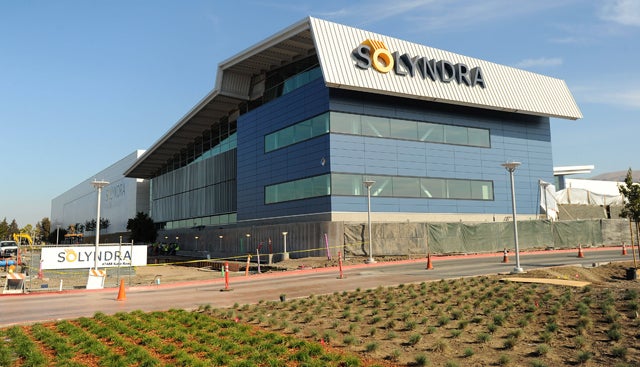Taxpayers will likely shell out another $14.3 million in federal aid to the 1,100 people formerly employed by defunct solar company Solyndra. The Labor Department announced Monday that it had approved Trade Adjustment Assistance payments for those former employees, which may pay out about $13,000 for each.
TAA is designed to compensate American workers laid off as a direct result of foreign competition, and to train them for other occupations – though the program has shown few signs of success. The Labor Department’s move is a tacit assertion that Solyndra’s failure was due to competition from the Chinese, which has been the administration’s and congressional Democrats’ position since Solyndra declared bankruptcy in August.
But the claim hardly holds water. As Barry Cinnamon, CEO of Westinghouse Solar, pointed out shortly after Solyndra declared bankruptcy, American solar panels, on average, typically cost about 10 to 20 percent more than ones produced in China. But Solyndra’s product cost about twice what Chinese panels did.
Solyndra’s business model was sustainable as long as refined silicon, the material used by Solyndra’s competitors but left out in the company’s unique panel design, remained expensive. When its price fell, so too did the price of solar panels. But because it did not use refined silicon, Solyndra’s production costs did not decline with those of its competitors.
Solyndra was also banking on its low-cost installation as a means to one-up the competition and reduce the overall costs to consumers of using Solyndra panels. But competitors did not stand still (they never do). Companies manufacturing cheaper products were also able to develop methods of inexpensively installing their panels. Solyndra’s installation advantage evaporated.
In an industry as young and technologically tumultuous as solar, turbulent markets are the rule. But the Energy Department seems to have assumed stasis in the price of refined silicon and the company’s competitive advantage in installation costs – or it simply didn’t bother to examine in any detail those facets of the solar panel market.
Solyndra’s failure was not a product of Chinese competition. The company’s business model was simply unsustainable. “It costs [Solyndra] $6 to make a unit,” one industry analyst told ABC News. “They’re selling it for $3. In order to be competitive today, they have to sell it for between $1.5 and $2. That is not a viable business plan.”
“The consensus view inside the solar industry is that Solyndra was not going to make it,” another analyst said shortly after the company went bankrupt.
But despite this consensus that Solyndra’s business model was the root of the company’s woes, the Labor Department has now decided to sink another $14.3 million into the experiment, even before taxpayers have recouped a dime from their stake in the company.
Energy Secretary Steven Chu recently told a House committee that taxpayers shouldn’t expect to get much back through the company’s bankruptcy proceedings. On net, that already-small return just declined significantly.
The icing on the cake: TAA payments will, in this instance, be used to compensate employees laid off due to the negligence of the Energy Department’s loan programs office. “TAA has wandered so far from its supposed purpose,” Heritage’s Derek Scissors remarked, “that it is now being used to clean up the government’s own mistakes.”

































8 Replies to “Labor Department May Sink Another $14 Million into Solyndra”